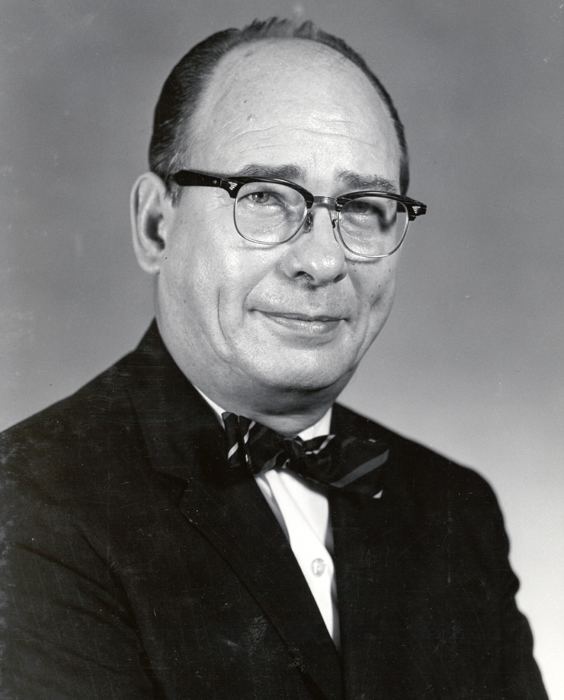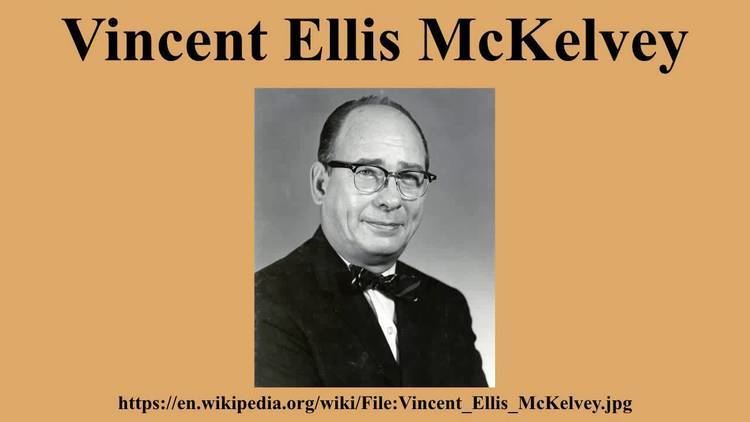Nationality American Role Geologist | Name Vincent McKelvey | |
 | ||
Born April 6, 1916Huntingdon, Pennsylvania, USA ( 1916-04-06 ) Alma mater Syracuse UniversityUniversity of Wisconsin Books Progress Report on Investigations of Western Phosphate Deposits: Geological Survey Circular Education Syracuse University, University of Wisconsin-Madison | ||
Institutions U.S. Geological Survey | ||
Vincent Ellis McKelvey (April 6, 1916 – January 23, 1987) was an American geologist. He was married to Genevieve Bowman McKelvey. They had one son, Gregory McKelvey of Spokane, Washington. Dr. McKelvey was an earth scientist who spent 46 years with the United States Geological Survey. Dr. McKelvey was recognized as an international authority on deep-sea mineral deposits. From 1968 to 1982, he served as scientific adviser and senior deputy to the United States delegation to the Law of the Sea Conference of the United Nations, where fellow delegates often depended on his ability to render complex scientific issues into plain English.
Contents

He joined the Geological Survey, a branch of the Department of the Interior, in 1941. He was placed in charge of its explorations for uranium after World War II, was assistant chief geologist for economic and foreign geology by 1962 and was named senior research geologist three years later. Dr. McKelvey was named chief geologist of the Geological Survey in 1971 shortly before he became its ninth director, a post he held through 1977.

The McKelvey diagram (or box), a visual representation of how to classify a particular mineral resource based on the value of its production (economic, marginal, etc.) and the geologic certainty of its presence (measured, inferred, hypothetical, etc.), is named after him.
USGS career
In 1971, after William Thomas Pecora became Under Secretary of the Interior, Chief Geologist Vincent E. McKelvey, a career scientist with the Survey since 1941, became Director. McKelvey, a graduate of Syracuse University with a doctorate from the University of Wisconsin, had served in several research and administrative capacities in the Geological Survey. He was internationally known for his studies of phosphates, had headed the Survey's program of exploration and research for the Atomic Energy Commission for several years, had been deeply involved in sometimes controversial estimates of long-range energy and mineral-resource needs, and had most recently been engaged in studies of seabed resources.
McKelvey's term as Director was marked by an increase in multidisciplinary studies and in the diversity and complexity of Geological Survey operations, as well as an increased effort to make scientific information acquired through years of research available in a form most easily used in the solution of such contemporary problems. In 1973, the Geological Survey moved its National Headquarters from downtown Washington to a new building designed expressly for its needs in Reston, Virginia. It took on primary responsibility for operational research in seismology and geomagnetism by agreement with the National Oceanic and Atmospheric Administration, and 10 units of NOAA were transferred to the Geological Survey.
In 1976, Congress transferred jurisdiction of the Petroleum Reserve in Alaska from the Department of the Navy to the Department of the Interior, effective June 1, 1977. Responsibility for administration of the continuing petroleum exploration program on the Reserve and operation of the South Barrow Gas Field was delegated to the Director of the Survey. The new activity brought with it a 50-percent increase in funds, but most of the increase was for contractual services.
In September 1977, Secretary of the Interior Cecil Andrus announced that he had accepted McKelvey's resignation as Director but that McKelvey would remain with the Survey as a research scientist. From 1978 until his death at his home in St. Cloud, Florida, Dr. McKelvey continued to work as senior research geologist for the Geological Survey and also taught at the Florida Institute of Technology during the early 1980s.
